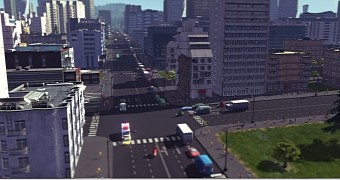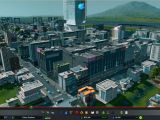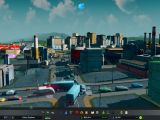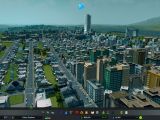Developer Colossal Order has released its sixth diary, delving into the development process for its upcoming city building simulation game Cities: Skylines.
The newest post on the Paradox Interactive forums details some of the neat underlying systems that the simulation game runs on, explaining the way they interact with each other in order to provide an in-depth experience.
The team states its goal to create fun systems for players to enjoy, in a comprehensive simulation environment, right down to individual citizens.
The heart of the game is the way in which citizens and goods move around and interact with each other. In order to provide a satisfying experience, Colossal Order created each citizen with a name, age, home and workplace, and goals that require them to navigate the city.
The citizens all travel between their homes and workplaces, to school, shopping centers, and occasionally take leisure strolls around town.
As not all citizens own cars, some will walk to their destination, which is when public transportation comes in handy. If available, of course. Public transportation will also be used by car-owning citizens, in order to cut down on the time spent on traffic.
But all this attention to detail comes at a price. Simulating individual citizens takes a lot of processing power, which means that the developer opted to cut down on the number of inhabitants of the city.
Therefore, some of the bigger residential buildings in the game will have a lot less people living in them than would be realistic, coming down to the decision to have individual citizens over a mass of unnamed virtual people.
Enough about the citizens, what about the goods?
Goods are the blood that flows through a city's veins, and they are produced in industrial areas, then transported to commercial areas, where they are purchased by citizens and tourists. That means that players have to take care to build the necessary infrastructure to allow this.
For every commercial area, there will be trucks driving to and from, and the same holds true for industrial areas, when it comes to raw material supply chains.
If the city produces raw materials by specialized industry, the industry will automatically ship them to the specialized production facilities where they are required. Production plants will normally prefer local providers, but if their needs aren't met, they will resort to ordering materials from outside the city.
If there are not train or cargo ship connections available for doing commerce with the outside world, the materials will have to be delivered by truck, putting an extra strain on the road infrastructure.
Fortunately, Cities: Skylines has an in-depth road editor, enabling users to create roundabouts, elevated roads, and more direct routes.
The company provides an additional example of how everything is connected in Cities: Skylines, stating that the presence of a Fire Station raises the happiness of nearby residential buildings, which means that the citizens will be less likely to turn to crime. However, in the event of a fire, the service vehicles will only be able to get to the incident site in time if the roads aren't too crowded.

 14 DAY TRIAL //
14 DAY TRIAL // 


